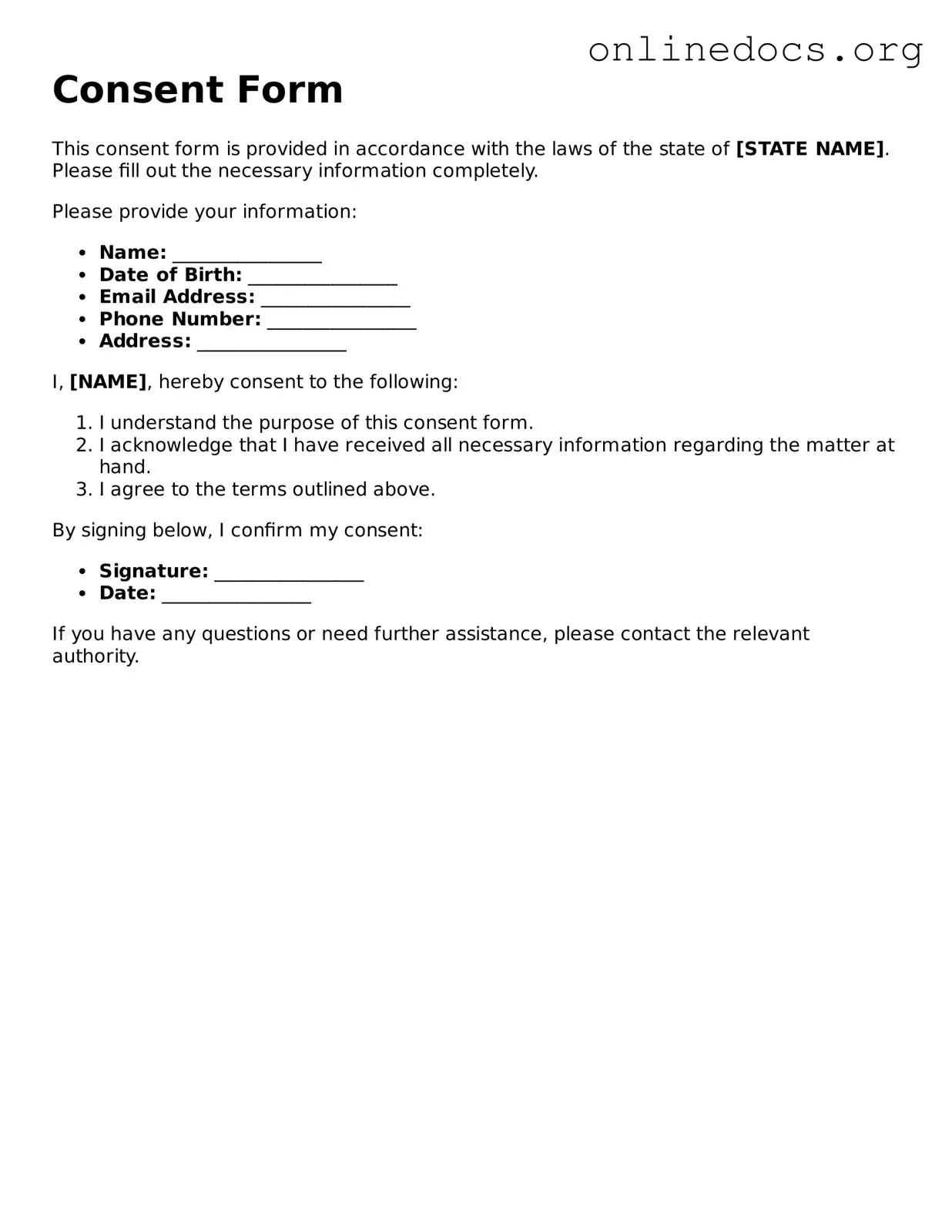The consent form is similar to a waiver, which is a document that relinquishes a person’s right to claim damages or seek legal recourse under certain circumstances. Just as a consent form outlines the risks associated with an activity and seeks the individual's agreement to participate, a waiver explicitly states that the signer understands those risks and agrees not to hold the organization responsible for any injuries or damages that may occur. Both documents aim to protect organizations by ensuring that participants acknowledge potential hazards.
In many cases, understanding the various legal documents can be critical for safeguarding interests and ensuring clarity in transactions. A New York Bill of Sale is one such essential form that acts as proof of ownership transfer and provides a clear record of the sale. This document, which is necessary for a variety of transactions ranging from vehicles to personal items, can be easily accessed online, such as through legalformspdf.com, ensuring that both buyers and sellers are protected in their dealings.
Another document akin to a consent form is a release agreement. This type of document is often used in situations where one party agrees to release another from liability. Similar to a consent form, a release agreement requires the individual to acknowledge understanding of the risks involved. The key difference lies in the fact that a release agreement often involves a broader scope of liability, potentially covering various claims, whereas a consent form typically focuses on specific activities or procedures.
Medical authorization forms share similarities with consent forms, particularly in healthcare settings. These documents grant healthcare providers permission to perform specific treatments or procedures. Just like consent forms, medical authorization forms ensure that patients are informed about the nature of the treatment, its risks, and alternatives. Both documents serve to empower individuals by allowing them to make informed decisions regarding their health care.
Informed consent forms are closely related to general consent forms, particularly in research contexts. Informed consent requires that individuals are fully aware of the study's purpose, procedures, risks, and benefits before agreeing to participate. This is similar to a general consent form, which seeks to ensure that participants understand what they are agreeing to. Both documents emphasize the importance of transparency and respect for individual autonomy.
Confidentiality agreements, often used in professional settings, are also comparable to consent forms. These agreements outline the terms under which sensitive information may be shared or disclosed. Like consent forms, confidentiality agreements require individuals to acknowledge their understanding of the implications of sharing information. Both documents aim to protect personal or proprietary information while ensuring that individuals are aware of their rights and responsibilities.
Parental consent forms are another type of document that resembles general consent forms, particularly in situations involving minors. These forms require a parent or guardian to provide permission for a child to participate in activities, such as sports or field trips. Similar to consent forms, parental consent forms ensure that the risks are communicated to the guardians, who then make informed decisions on behalf of their children.
Employment agreements can also exhibit similarities to consent forms, especially in the context of workplace policies. These documents often require employees to acknowledge their understanding of company rules, safety protocols, and potential risks associated with their job. Like consent forms, employment agreements seek to ensure that individuals are aware of their rights and obligations within a specific context.
Release of liability forms are another document that parallels consent forms, particularly in recreational activities. These forms typically require participants to acknowledge the risks associated with an activity and agree not to hold the organization liable for any injuries sustained. Both release of liability forms and consent forms emphasize the importance of informed participation and the understanding of potential hazards.
Finally, non-disclosure agreements (NDAs) share some characteristics with consent forms, particularly in terms of informed consent regarding information sharing. NDAs require individuals to acknowledge the confidential nature of certain information and agree not to disclose it. Similar to consent forms, NDAs ensure that individuals understand the implications of their agreement, thereby protecting sensitive information while respecting the rights of all parties involved.
